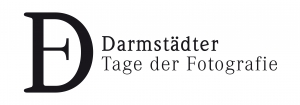Affären
24 01 21
As part of the 11th Darmstadt Photography Days themed ‹Bizarre Escapes: Humour in Photography› the Kunsthalle Darmstadt realises two exhibitions.
In the 1960s, Heide Uta Stolz (1939-1985) created a groundbreaking photographic oeuvre, which – as with many female artists of her generation – as only been (re-) discovered in recent years. The exhibition ‹Heide Stolz: Affairs›, curated by Stefan-Maria Mittendorf and presented by the Kunsthalle Darmstadt and the 11th Darmstadt Photography Days, shows a selection of 62 of her pictures, some of them being displayed publicly for the first time.
The staging, motifs and implementation as well as the subversive potential of Heide Stolz's photographs show clear echoes of the surrealist aesthetic. Contemporary image production, art, but also advertising and cinema were no less important to her. Heide Stolz adapted cinematic stylistic devices such as a strong view from below, open image compositions with cuts as well as bizarre perspectives, which often bring the viewer into voyeuristic positions. A central point of reference for her was the contemporary action and western film, whose aestheticized depictions of violence and image innovations flowed into many of her productions.
Heide Stolz's photographic examination of the image production of the 50s and 60s is as ambivalent as it is political. In particular, the conservative image of women, which had survived in a dangerously subtle way into the modern age, is a recurring theme in her work. Her pictures, however, always remain unclear. They speak in hints, blurring the lines between sleep and death, devotion and violence, perpetrator and victim. The staged photographs by the artist, who died in 1985, are reminiscent of the well-composed images by William Eggleston, Jeff Wall or Cindy Sherman. Heide Stolz anticipated the alleged innocence of the photographic image and thus the techniques of postmodern deconstruction of photography.
The work of Heide Stolz gained early, but only temporary recognition. In 1965, she exhibited at Heiner Friedrich’s Munich-based gallery, whose program also included artists such as Cy Twombly and Georg Baselitz. The exhibition ‹Heide Stolz: Affairs› strives to contribute to a wider recognition of her impressive photographic work. Still affecting today, it has lost none of its topicality and enlightening impact.
Heide Uta Stolz was born in 1939 in Kupferzell, Baden-Württemberg. In the 60ies she lived and worked in Munich and Aschhofen. After the suicide of her husband, painter Uwe Lausen, in 1970, she and their two daughters permanently lived in Aschhofen. In the years that followed, she worked with resin inclusions and created colour pencil drawings. As in the case of her early sculptural work of the 50ies, only few originals have been documented or survived. In 1985, Heide Stolz died of cancer at home in Aschhofen.
In cooperation with


The exhibition is
supported by




